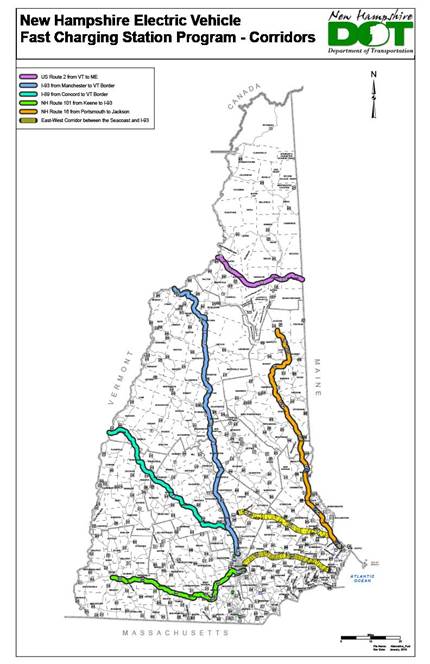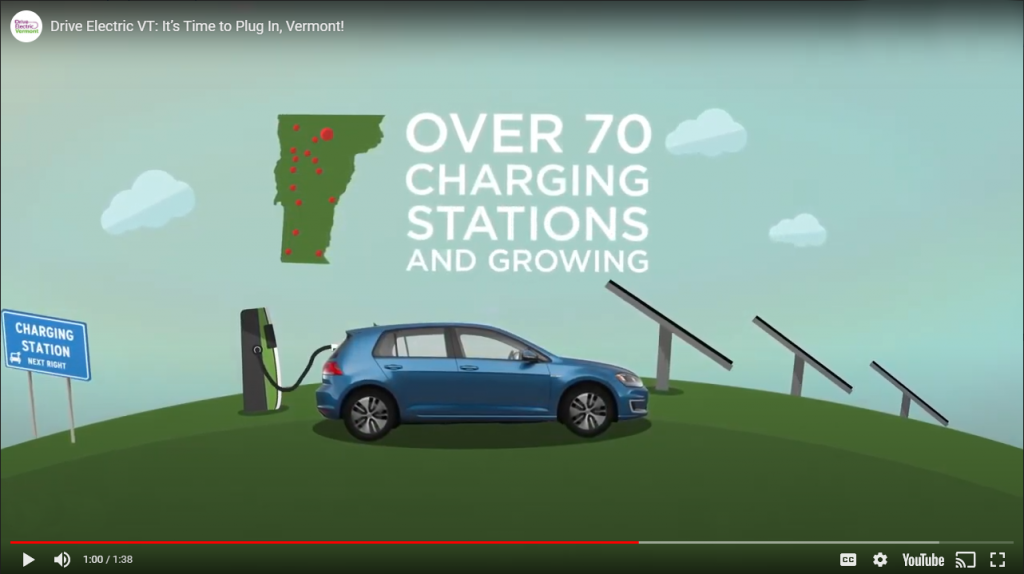Last week, President Biden laid out a $2 trillion infrastructure plan that puts transportation upgrades at the top of a long national project list. The $174 billion earmarked for electric vehicles and electric vehicle (EV) charging equipment actually exceeds the $115 billion budgeted for repairs to roads, bridges and highways. For those who own an electric vehicle, or are thinking of buying one, these seem like the right priorities:
* In poll after poll, consumers cite the lack of EV charging stations and extra time to charge EVs as the main reasons for not buying one. The higher purchase price of EVs actually ranks behind these other factors.
Biden’s infrastructure plan is going all out to allay drivers’ concerns about a switchover to EVs. To avoid any sticker shock, the plan calls for extending a $7,500 federal tax credit for new EV purchases, and provides rebates and other financial incentives for individuals and businesses. And to put to rest drivers’ “range anxiety” over battery-powered vehicles. Biden’s plan would spread a half million new public charging stations across the United States by 2030. It’s also part of a plan to focus on decarbonization of the U.S. transportation sector – and for good reason. As electric utilities move toward a greener energy supply, it’s the transportation sector that’s now pumping out the most greenhouse gas emissions — about one-third of the nation’s total. For that share to fall, EV adoption has to move into high gear.
* At present, EVs make up just 2% of the new car market and represent less than 1% of all cars, sport-utility vehicles, vans and pickup trucks on the road.
Charging up – More Options in the Near Future!
If you already own an electric vehicle – and, better still, use solar power to charge it – you’re already doing your part to eliminate carbon from your personal transportation footprint. And if you power your EV from home solar, you’re moving from $2-$5 “at the pump” to more like $0.75 “per gallon” to power your vehicles! But what happens when you want to venture out, especially on longer drives, and you need to charge your EV battery away from home? Does “range anxiety” set in? Right now, the nation has about 45,000 public charging stations, with about 115,000 charging outlets overall. By comparison, the U.S. has about 110,000 gas stations – with lots more pumps that make refueling quick and easy.
A bit of a challenge for EV drivers, most existing public charging stations use so-called “Level 2” chargers, which take about eight hours to deliver a full charge. Campgrounds have charging capability for RV’s, using Level 2 chargers, so that’s an option for those who can take advantage, but EV drivers on the go can benefit from something that can deliver a quicker charge.
Direct current “fast chargers” (DCFCs) are fast becoming the answer — for public charging stations at least. They typically can deliver more than 200 miles of range in only 30 minutes of charging time. We’re still a bit short on that solution in Vermont and New Hampshire, but the solution is coming shortly.
So, as we await Congress’s vote on the Biden infrastructure plan, here’s a quick review of where EV adoption stands in Vermont, New Hampshire and neighboring Massachusetts. There are even a few suggested EV routes at the end!

Vermont – A Small State Leader
It’s been 63 years since Vermont became one of the first states to complete a section of the nation’s interstate highway system. What started as the first dozen miles of I-91, north of the Massachusetts border, now extends 177 miles, all the way to Canada. I-89, which opened its first stretch in 1960, now runs 129 miles, from the Connecticut River Valley of New Hampshire to the top of Lake Champlain in northwest Vermont. The I-89/I-91 interchange in White River Junction was finished in 1967, putting the “Upper Valley” of Vermont and New Hampshire on the destination map for a new generation of road-tripping tourists.
Fast forward to today and Vermont is a trailblazer once again. The Green Mountain state now leads the nation in the rate of EV charger installations, at 36 for every 10,000 residents. However, statistics like this skew in favor of states with small populations. On the ground, Vermont’s EV charger coverage is still quite spotty, especially when it comes to fast chargers!
- Traveling along the I-91 corridor, only three fast-charging stations are found in Brattleboro, White River Junction and Bradford. For the last 80-mile stretch to the Canadian border, only five level 2 public charging stations are within easy reach of I-91.
- I-89 also has a 43-mile gap between fast-charging stations in Quechee and Barre. Coverage then improves from Montpelier through St. Albans, along this most-traveled portion of Vermont’s interstate highway system.
Fortunately, more EV charging stations are on the way in Vermont. In February, the Vermont Agency of Transportation announced that 11 new fast-charging stations will be installed near major highways or ski areas throughout the state. Notably, five of these new charging stations will be located in the Northeast Kingdom and along Vermont’s northern flank with Canada.
To date, Vermont has spent $2.7 million from the 2016 “dieselgate” settlement with Volkswagen, leading to 86 level-2 charging installations and 16 fast-charging stations across the state. Once these 11 new installations are added over the next two years – with another $1.7 million spent out of Vermont’s share of this $2.7 billion national settlement trust – all Vermonters should be within an easy 30-mile drive of a fast-charging station.

New Hampshire – A Small State Laggard
Across the Connecticut River, in New Hampshire, EV adoption is still in need of a real jump-start. Not only does the Granite State have less than half of Vermont’s EV adoption rate; it has virtually no fast-charging stations available to the general public north of Bedford, right on the Massachusetts border. The one lucky exception is for Tesla customers, who can access Tesla supercharging stations at the Hooksett tolls and at five shopping centers around the state. While each station has 10 or more outlets available, they only work with Tesla vehicles.
Meanwhile, New Hampshire has been slow to spend the $31 million in funding it has received from Volkswagen’s “dieselgate” settlement. Fully half of the proceeds have been earmarked to replace diesel-powered vehicles owned by state and local governments, with less than $5 million going toward EV charging infrastructure. A year ago, New Hampshire turned down all bids to install fast chargers along six major transportation corridors in the state. The goal is to put all New Hampshire residents within 50 miles of a fast charger eventually.
Separately, Electrify America, the Volkswagen EV-charging subsidiary that grew out of the “dieselgate” settlement, has plans to install fast-charging stations at the Mall of New Hampshire in Manchester and at the Wal-Mart shopping plaza in West Lebanon later this year. These chargers are capable of providing an electric vehicle with up to 80 miles of range in just 20 minutes. Altogether, Electrify America has proposed spending $20 million to build 28 additional charging stations in New Hampshire and Vermont, including two along I-89 between Concord, NH, and Burlington, VT.
EVGO, a competing EV charging firm that operates more than 800 fast-charging stations in 34 states, thinks New Hampshire should take an alternative approach to building out its EV charging infrastructure. It recommends that the state concentrate more charging stations in its urban centers to accommodate those who rent apartments or townhouses and may not have access to garages or personal charging stations.
| Vermont | New Hampshire | Massachusetts | |
| National ranking | 3 | 28 | 4 |
| EV Adoption Rate | 0.49% | 0.22% | 0.45% |
| Level 2 & Fast Chargers | 279 | 126 | 1,589 |
| # of Outlets/per 10K vehicles | 713/35.7 | 276/5.7 | 3,477/15.9 |
| # of EV program incentives | 15 | 6 | 18 |
Massachusetts – A National Leader
Finally, Massachusetts – our more populous neighbor to the south – is regarded as a national leader in EV adoption. It boasts an EV adoption rate nearly as high as Vermont’s, despite having a 15 times greater population. Massachusetts also has 18 state incentive programs to promote EVs and EV charging infrastructure, compared to only six in New Hampshire.
- Massachusetts offers $2,500 rebates toward the purchase or lease of EVs under $50,000 by individuals, and $7,500 grants for EV purchases used in public fleets.
- Another state program provides grants of up to 80% toward the purchase and installation of EV chargers (up to $50,000), as long as they are available for public use at least 12 hours a day
- When all of these factors are put together, Massachusetts ranks just behind Vermont in a national ranking of state adoption of EV infrastructure.
- Many utilities are also targeting this market, since electrification of the ground transportation fleet could lead to a 25% bump to their own customer demand.
- You can find a complete listing of state government and utility incentives for EV purchases and charging infrastructure here.
Wanna Go for an E-venture?
Given the current state of play for EV charging infrastructure in northern New England, are you ready to go on an “e-venture”? There are lots of tools included as links in this post that can help you plot your route from one fast-charging station to the next.
That said, to the extent “range anxiety” was ever a real problem for EV drivers in New England, it isn’t anymore. You can always count on finding an EV charger somewhere in, say, a 50-mile range of your location. You just can’t be sure whether it will be a fast charger when you get there – or whether other people will be waiting in line to use it!
That’s one reason why President Biden’s infrastructure plan wants to blanket the country with 500,000 new charging stations. This would put the number of EV outlets roughly on par with the number of gasoline pumps available at 110,000 gasoline filling stations nationwide.
* Remember, a fast charger is only as good as the fast time you make use of it. The cost per minute of a direct current fast-charging (DCFC) system fast is typically about 20 times the rate for a level 2 charger (or about 33₵/min vs $1/hr). And, once you get to an 80% state-of-charge (SOC) for your EV battery, a DCFC system slows down to the same charging rate as a level 2 system. So, it ends up being way cheaper to “top off your EV tank” at a level 2 charger – including one you may have installed at your home!
If you’re ready to go on an e-venture, here are a few popular routes recommended for EV drivers in our neck of the woods. With any luck, you might even spot some new EV charging stations along the way!
Solaflect is your home energy management partner. We help you install clean and affordable solar electricity and home battery systems for a more resilient and climate-friendly future. Click here to contact us, or email info@solaflect.com, or call (802)649-3700, or text (802)308-3018. Working together, the power is in our hands to make a difference!





